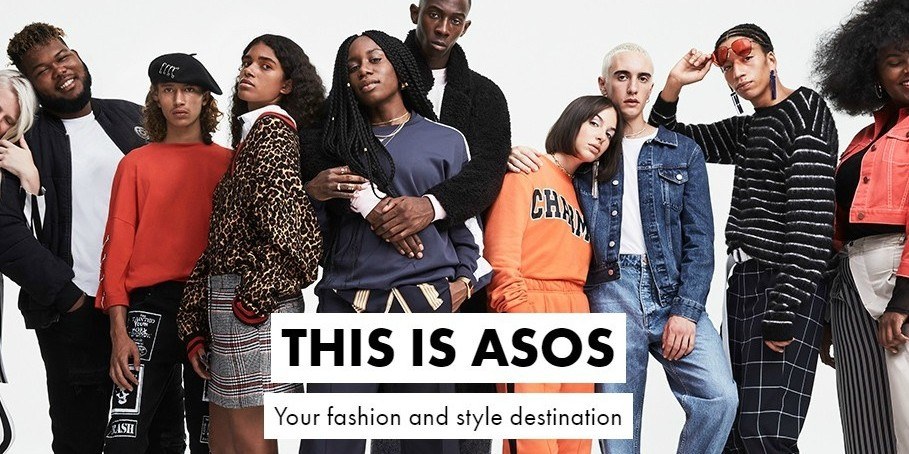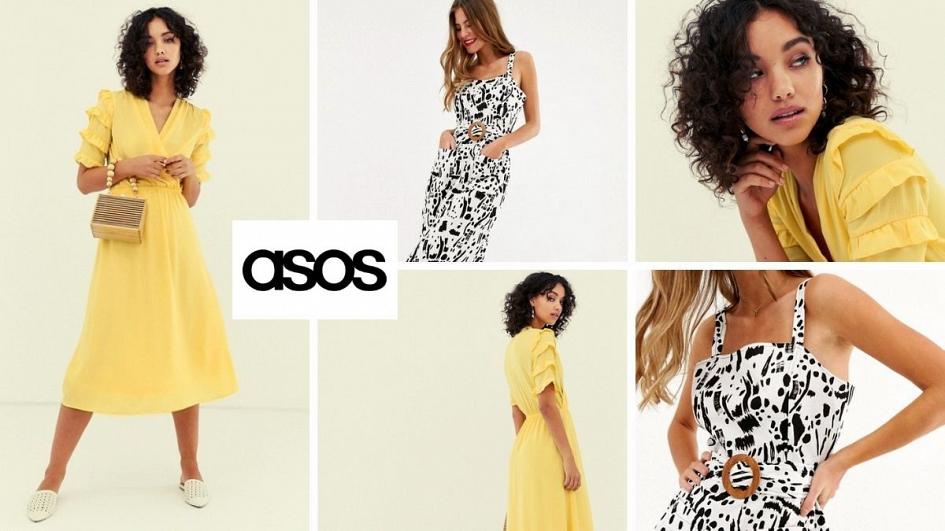ASOS: Your one-stop shop for all things fashion

ASOS, the UK-based fashion platform, is a two-sided platform that connects shoppers to third-party vendors as well as their private label.
ASOS is a digital marketplace that connects fashion labels with millennial shoppers. Founded in 2000, the London-based company now stocks over 80,000 SKUs and delivers clothing to over 200 countries and territories. The two-sided platform relies on matching it’s 20.3 million active shoppers with new clothing items, earning their revenue through a 20% commission on sales from third-party vendors, advertising on their platform, and product revenues from private label sales.
ASOS creates value
Creating a network effect. By collecting shopper data and analyzing it with machine learning, ASOS is able to provide curated clothing recommendations to shoppers based on the sizing and style of their previous purchases. The collection of this data across many geographies is what allows the platform to become more personalized for shoppers and therefore attracts a greater number and higher quality clothing labels to the platform. This network effect creates value for the shoppers and vendors and is a part of their competitive advantage.
Building a strong brand. ASOS focuses heavily on offering a great customer experience, which they achieve through impressive customer support, next-day delivery, free returns, an effective loyalty program, and the addition of new fashionable items on a weekly basis. By creating this strong brand loyalty, they lock in their users and potential increase the users’ willingness to pay.
Leveraging efficient operations. ASOS differentiates itself from other fashion platforms in the cost efficiency of their warehouses through the implementation of smart inventory management and complete automation.
ASOS captures value
Since ASOS creates value for users and vendors, it was able to quickly ramp up to over 20 million shoppers. Their pricing model of 20% revenue per transaction ensures that they capture the value they have created.
ASOS has made two significant decisions to further capture value:
- Free delivery subscription
By charging an annual subscription fee of $19 for free next-day delivery, ASOS locks in customers and increases their revenue substantially
- Designing private labels
Their growing market share, position as market leader in online fashion in the UK, and inventory of user data has allowed ASOS to pivot their business model to designing and delivering a private label offering. In this way, ASOS addresses the risk of disintermediation that is common with platforms that facilitate transactions. This vertical integration allows them to provide even lower prices to their customers while saving costs and expanding their profit margin, thus both creating and capturing value.
Sustainability and scalability
ASOS has created a hybrid business model, first as a platform and then expanding into the product space. Two-sided platforms like ASOS are inherently scalable, because they encourage mass-market user adoption to maximize interactions between shoppers and vendors, at no cost to shoppers. This is apparent when we look at the number of users currently on the platform (20.3 million) and the fact that it is expanding its global reach to serve markets in the EU, Russia, and United States.
The sustainability of the platform is a question of deterring competitive imitation. ASOS has spent two decades building an unrivaled data pool, so if a competitor is to come in and steal market share, it would have to be an incumbent such as Amazon who already has a strong data pool to access and draw information from. For the moment, Amazon’s fashion offerings have been subpar, with little to no collaborations with big clothing brands and designer labels.
As ASOS shifts from a two-sided platform to a vertically integrated fashion brand, the sustainability of their business model is ensured. Much like the Amazon marketplace dilemma where third-party sellers see decreases in their sales as Amazon released their own products, it is foreseeable that vendors on ASOS get squeezed out as ASOS imitates their best-selling products for their private label offering and increases their commission rate on clothing sales.
Sources





Very interesting! Regarding your comment on Amazon, I think that ASOS is likely very concerned. I recently read that Amazon’s Prime Wardrobe platform and its “try before you buy” concept is doing very well. It basically sends customers the clothes they like for free and gives them seven days to decide if they want to keep them or return free of charge. I wonder if ASOS has been feeling the effects of this new Amazon service.
It’s quite concerning to see that ASOS has expanded into private-label as this move may alienate the existing suppliers. I see this action similar to Amazon moving into private label and undercutting suppliers. It seems that most of the company’s value creation comes from the demand side (i.e. building a strong branding, offering a wide variety of SKUs to consumers), but it’s also important to create values for suppliers to reduce the risk of multi-homing
I agree with PZ’s comment about multi-homing risk and private label concerns. I see clearly how ASOS creates value for shoppers, but I’m not convinced it truly creates value for vendors in the current business model… And the move to private label makes them a direct competitor to their vendors.
In my opinoion, ASOS still seems to function largely like a traditional retailer (curating a collection of merchandise across brands). What makes a fashion brand more likely to sell via ASOS than via its own e-commerce site? This concern is particularly relevant since setting up an e-commerce presence can be done in a low-investment way, using third-party platforms like Shopify and fulfillment solutions like FBA (Fulfillment by Amazon).
I think your point about ASOS’s global reach is really interesting. More than any other retailer I’ve used, they’ve built out a truly global distribution network for both delivery and returns. I wonder if this access to previously unreachable markets will help keep brands on the platform despite sales being squeezed by ASOS knockoffs.
This is a really interesting post. I have certainly benefited from ASOS’ growth over the years and its value creation to the customers. I was not aware of the machine learning approach that ASOS used to provide curated recommendations. I liked your point about ASOS being both a platform as well as a product as a means to address disintermediation. However, I do agree with some of the other comments that mimicking top sellers is similar to the approach Amazon has used to undercut third-party sellers. I am intrigued to see how ASOS does as competitors enter this space: especially Amazon’s Prime wardrobe.
Thanks for your comment Partha. I checked out Amazon Prime wardrobe and it seems really interesting. I think their 7-day try-on period (before you pay) is a great strategy to convert users. That, coupled with the fact that the membership fee is included for Prime Members makes the switching cost very low and should definitely be a cause for concern for ASOS.
Awesome article and insight on ASOS! I am impressed to learn that they stock over 80K SKUs and have over 20M active shoppers. However, I am not sure how sustainable this business model is given the 20% commission on sales for third party retailers. As this is greater than the fee structure that Amazon charges, which is continuing to grow in other segments, it may result in margin compression here. Likewise, I believe the ease with which third-party retailers can create their own brands and online storefronts may encourage the ones which are successful on ASOS to leave and connect to consumers directly.
Great article! I believe the Amazon threat is a real one. I recently read that Amazon was looking to enter into the luxury online fashion market so perhaps there would be some competitive overlap with ASOS. Not only is Amazon’s data a threat but also their efficient and extensive distribution network. Perhaps ASOS can look to compete through its more reliable and selective image.
Interesting article. I couldnt really think of any platforms that currently do something similar or that can compete head to head. Net-a-porter, for instance, is intersting, but it focuses on a luxury market.
Also, I am wondering whether ASOS has considered selling performance management or analytics to the labels that sell on their website. That could be an additional source of revenue and decrease the likelihood of multihoming (or at least suppliers will prefer to go to ASOS).